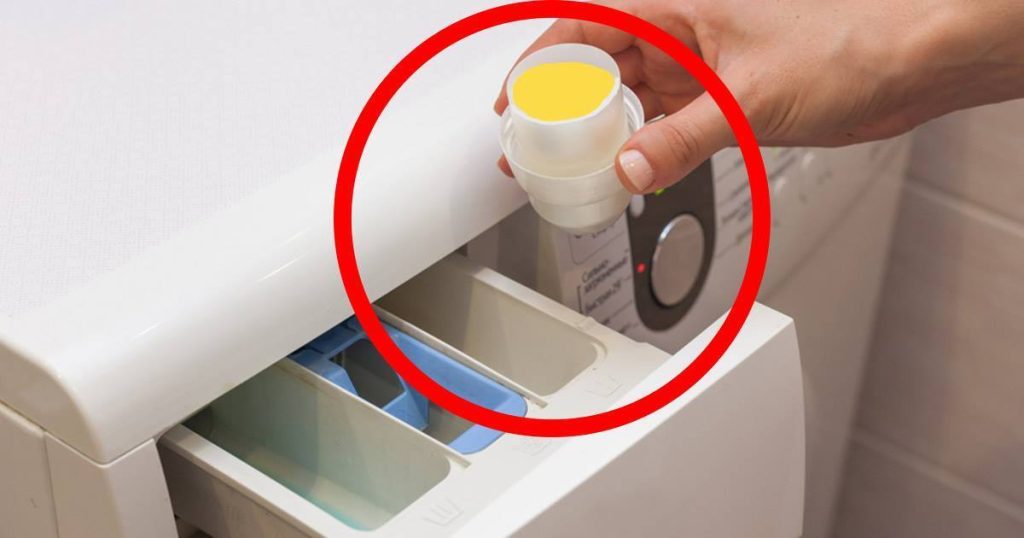Should you use vinegar to clean your washing machine?
Others are reading now
Your washing machine cleans your laundry. However, the machine itself also needs to be cleaned regularly. But how do you do it best? Is vinegar the go-to home remedy for this task, or should you actually be cautious with it? We’ve compiled the best tips for tackling grease lice and limescale buildup.
It’s crucial to clean your washing machine regularly because it can become a breeding ground for bacteria, leading to unpleasant odors lingering in your ‘clean’ laundry.
Hard water can cause limescale to build up on the machine’s heating element over time. This is something you’ll want to prevent. Regular cleaning of your washing machine helps avoid these issues.
Grease Lice
A major enemy of your washing machine and clean laundry is known as grease lice. This is the greasy, gray substance you may find in your machine, often located around the rubber seal of the washing machine door.
Also read
Lower Temperatures Increase the Risk of Grease Lice
Saving energy in your household might lead you to run the laundry at lower temperatures. Modern detergents can effectively clean laundry at 30 or even 20 degrees Celsius. However, this increases the risk of grease lice formation in the machine. At 60 degrees or higher, detergents dissolve and rinse out better than at lower temperatures.
Also, avoid using too much detergent. A small dosage often suffices for clean laundry. Using too much increases the chance of grease lice development, as it leads to detergent residues remaining in the machine.
Cause is a Combination of Factors
Grease lice doesn’t appear overnight. It’s a combination of detergent residues, fabric softener, clothing fibers, and human hair and skin cells. Another term for it is washing lice. Since bacterial growth can occur within it, it can start to smell. If your laundry smells musty after washing, grease lice are often to blame.
Limescale in the Machine
Tap water contains a bit of limescale. In areas with hard water, the risk of limescale buildup on your washing machine’s heating element increases. This buildup can cause the water to take longer to heat up over time, leading to increased electricity use and higher energy bills. Moreover, the heating element may break down sooner if it’s heavily calcified.
What to Use for Cleaning? Experts Advise Against Vinegar
So, what should you use to tackle grease lice and limescale? Vinegar is a common household cleaning agent because it dissolves fats and limescale well.
However, frequently using vinegar to clean a washing machine of limescale and grime is not recommended. Experts from manufacturers like Miele and Bosch, as well as the German consumer magazine Öko-test, highlight the dangers of using vinegar. Yes, this traditional home remedy can clean and remove grease. But the acid in (cleaning) vinegar is actually too aggressive and can damage rubber seals, hoses, and metal parts of the machine over time. Therefore, vinegar is discouraged.
Monthly Cleaning at 90 Degrees
What is an effective way to clean the washing machine and combat grease lice and limescale? Running a boil wash once a month is advised. Set the machine to 90 or 95 degrees Celsius. The high temperature kills bacteria and dissolves dirt and grease effectively. Adding a sheet or bath towel to the drum can help clean the interior more thoroughly.
You can add a dash or scoop of detergent for white laundry to the dispenser so the machine gets thoroughly cleaned during the boil wash. Alternatively, you can use a dishwasher tablet instead of laundry detergent.
Experts thus advise against using vinegar. Instead, you can use a descaling agent from the supermarket. There are also special washing machine cleaning agents on the market that do their job well and can be used.
Also, consult the user manual of your washing machine and read what is specifically mentioned about cleaning the machine.
The Detergent Drawer and the Door Seal
Over time, the drawer where you put the detergent and fabric softener can become dirty and even clogged. If there’s any detergent or fabric softener residue left after a wash, it’s time to act and clean the drawer.
Most drawers have a plastic tab in the middle that you can press. Pulling the drawer towards you then allows you to remove it from the machine for thorough cleaning.
When you open the washing machine door, you’ll see the door seal. Don’t forget to clean this regularly too. Grease lice or other dirt can easily accumulate at the bottom of this seal, which isn’t conducive to clean laundry.
Don’t Forget to Clean the Filter
At the bottom front of most washing machines, there’s a small door hiding the so-called pump filter. It catches lint, coins, or other small particles from the wash water. If the filter becomes clogged, it can lead to leaks since the water is no longer properly drained. It’s best to check and clean the filter once a month if necessary.
Unplug the machine first. Be prepared for water to leak out when you remove the filter. Place a towel underneath to catch any spillage. Some machines have a special hose near the filter for neatly draining any remaining water. Gently open the filter cap so any present water can slowly drain out.
You can rinse and clean the filter under the tap before putting it back in place.
If you’re unsure how to do this, check your machine’s user manual for guidance. Some washing machines don’t have a filter, or sometimes the filter is located inside the drum instead of at the front.


